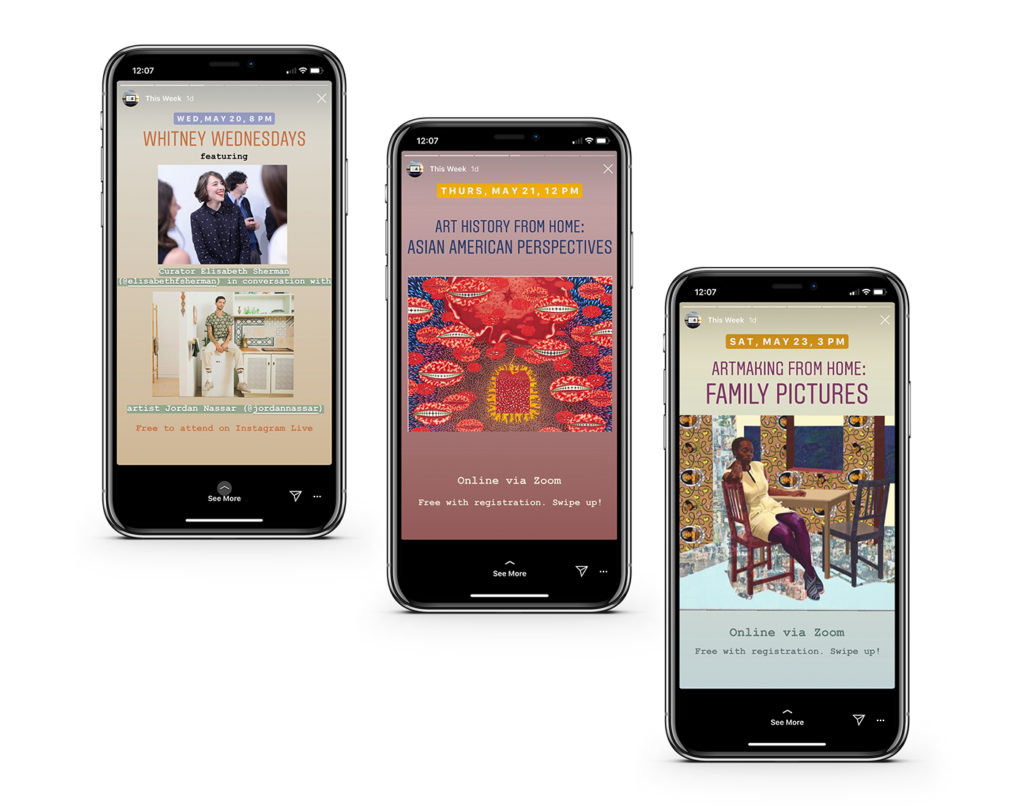Following the arrival of COVID-19, we saw countless consumer brands pump out ads professing that they’re “here for us,” with many of them not delivering on their promises. Yet, there have been some unexpected corners of the marketing world that are quietly doing everything right – finding their place in the narrative of their audience’s lives with grace, humor, and optimism.
One of the most unexpected sources of inspiration has come from museums. At Blue State, we’ve been lucky to work with many over the years (The Natural History Museum, MoMA, The Tate Modern, The Art Institute of Chicago, The Met, to name a few). Progress with museums can be slow-going, so to observe the rapid reinvention transpiring for so many in this moment is jaw-dropping. There’s a lot we can learn from observing what they’re doing right, whether you’re part of the museum world or not.
Finding your relevance in this time
Something museums have done exceedingly well in this time is finding the appropriate place in the daily lives of their audience. They’ve done this in a way that’s helped us all recognize the historic weight of this situation and reconsider the beauty in the awfulness – without ever preaching a word.
As we all began to fathom what shelter in place meant for us, many museums smartly referenced pages from history to help us put it in context. The Tate Modern and The Art Institute curated posts of the home landscape, challenging viewers to reframe the confines of their home environs as an artist might.
In another example, SFMoMA’s nod to the much-discussed toilet paper shortage could not have been executed better. Yes, there are humans on the other side of the prestigious institutional walls just like you, wondering where they’re going to score their next 2-ply.
The Art Institute of Chicago did their part to support shelter in place orders by commissioning artists to recreate famous works as though they were set in a time of quarantine. This had the added bonus of giving their local state and city leaders a subtle head nod while they were publicly under attack from the White House.
Let your audience take the stage
Few things on social media have been smile worthy over the past few months, yet the Getty #StayAtHomeChallenge was one of them. They challenged their audience to recreate works from their collection with objects from their home. The submissions are a mix of delightful, shockingly good, and even when done poorly, a great source of much-needed comedic relief.
The #StayAtHomeChallenge has now spread well beyond the Getty, and for good reason. It’s creative, it’s fun, and it gives their audiences a chance to express themselves through their brand. It’s the same underlying reason why the Ice Bucket Challenge took off, and is always a good reminder to begin with these non-negotiables for any social activation you’re hoping to be shared widely.
Becoming part of new rituals
Last but not least, museums have stepped up to provide truly needed educational and engagement resources to support their communities during this time. In doing so, they’re not only doing the right thing – they’re also retraining the metabolism of engagement for their supporters for the long-term. What once may have been a single touchpoint of an in-person visitation every few years has now expanded to include many more low barrier touch points on a daily, weekly, or monthly basis.
The best examples of this are in the education space. As many parents grappled with how to fill homeschool curriculums overnight, many museums opened up their vast collection of resources and programming into digital formats for parents to use. The Field Museum’s Learning Resources, Monterey Bay Aquarium’s Learning At Home, and Cal Academy’s Academy @ Home are all stellar examples of this being done well.
The socially isolated have found relief in free virtual convenings and entertainment from many museums. The Whitney’s #WhitneyAtHome is one of the best examples of this. They curate weekly conversations, film screenings, and a plethora of online resources to experience to stay connected (and distracted!). And though not museums per se, performance venues are doing great things here too. The Met Opera has vastly expanded its audience reach by offering free online nightly performances and in the Bay Area, SFJazz’s Friday at Five concerts series is becoming a ritual for many as the kickoff of their weekend.

The irony of museums being a shining example of how to do marketing right in this moment is that the threats they’re facing are likely a lot more real than that of most brands. Though their endowments will likely ensure they’ll come through the other side of this intact, the job security of the many workers putting on these programs and campaigns are far from certain. We’ve heard of many furlough and lay-off rounds hitting these institutions, and it’s hard to know what the future holds for anyone working in this space.
Despite this, they’ve avoided self-congratulatory displays of their heroism and, instead, stepped in to be useful to their audiences. It’s admirable, and a good reminder of the agency we all have in how we respond in this moment.
Want to share what you’ve seen across the arts and culture sector, or just want to chat? Reach out.